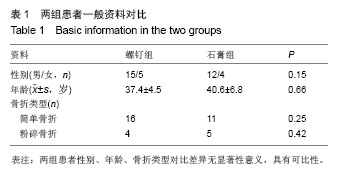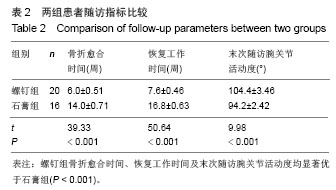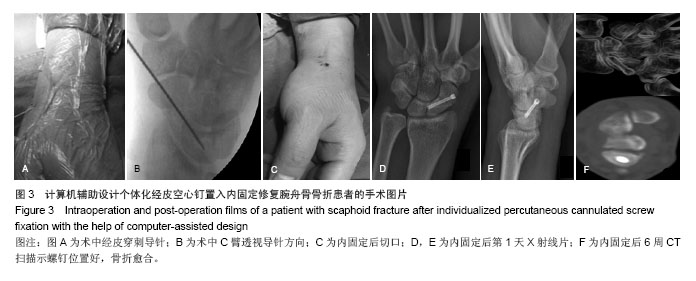| [1]Kawamura K,Chung KC.Treatment of scaphoid fractures and nonunions.J Hand Surg(Am).2008;33(6):988-997.
[2]Geurts GF, Van Riet RP, Meermans G, et al. Volar percutaneous transtrapezial fixation of scaphoid waist fractures:surgical technique. Acta Orthopaedica Belgica.2012; 78:121-125.
[3]王锦程,沈录峰,董谢平.跌倒致腕部骨折机理及腕保护器的研究现状[J].中国矫形外科杂志,2011,19(18):1522-1525.
[4]Alshryda S,Shah A,Odak S,et al. Acute fractures of scaphiod bone:systematic review and meta-analysis. Surgeon. 2012;6: 218-229.
[5]Buijze GA,Goslings JC,Rhemrev SJ,et al.Cast immobilization with and without immobilization of the thumb for nondisplaced and minimally displaced scaphoid waist fractures:a multicenter,randomized,controlled trial.J Hand Surg.2014;39(4): 621-627.
[6]Mc Queen MM,Gelbke MK,Wakefield A,et al.Percutaneous screw fixation versus conservative treatment for fracture of the waist of the scaphoid :a prospective randomized study.J Bone Joint Surg(Br). 2008;90(1):66-71.
[7]Bedi A,Jebson PJ,Hayden RJ,et al.Internal fixation of acute nondisplaced scaphoid waist fractures via a limited dorsal approach:an assessment of radiographic and functional outcomes. J Hand Surg(Am). 2007;32(3):326-333.
[8]Schadel-hopfner M,Marent-Huber M,Gazyakan E,et al.Actue nondisplaced fractures of scaphoid:earlier return to activities after operation treatment.A controlled multicenter cohort study. Arch Orthop Trauma Surg.2010;9:1117-1127.
[9]Modi CS,Nancoo T,Powers D,et al.Operative versus nonoperative treament of acute undisplacement and minimally displaced scaphoid waist fractures:A systematic review. Injury. 2009;40(3):268-273.
[10]Parajuli NP,Shrestha D,Dhoju D,et al. Scaphoid fracture:functional outcome following fixation with herbert screw. Kathmandu Univ Med J (KUMJ). 2011;9(36):267-273.
[11]Krimmer H,Schmitt R,Herbert T. Scaphoid fractures: diagnosis, classification and therapy. Unfallchirurg. 2000;103:812-819.
[12]Dodds SD,Panjabi MM,Slade JF.Screw fixation of scaphoid fractures:a biomechanical assessment of screw length and screw augmentation.J Hand Surg.2006;31(3):405-413.
[13]Guo Y,Tian GL,Jiang BG,et al.Central placement of screw fixation for scaphoid fracture:a biomechanical study.Journal of Pekin University. Health Sci.2013;45(5):684-687.
[14]樊志强,徐永清,孟伟正,等.正常腕骨三维运动学的在体研究[J].中华关节外科杂志,2009,3(3):346-351.
[15]Geurts G,Van Riet R,Meermans G,et al.Incidence of scaphotrapezial arthritis following volar percutaneous fixation of nondisplaced scaphoid waist fractures using a transtrapezial approach.J Hand Surg(Am). 2011;36(11)1753-1758.
[16]Meermans G,Van Glabbeek F,Braem MJ,et al.Comparison of two percutaneous volar approaches for screw fixation of schaphiod waist fractures:radiographic and biomechanical study of an osteotomy-simulated model.J Bone Joint Sur(Am). 2014;96(16):1369-1376.
[17]Zhang C,Xiong G,Liu K,et al. Percutaneous retrograde cannulated screw fixation of acture scaphoid waist fracture by a transtrapezial approach. Zhongguo Xiu Fu Chong Jian Wai Ke Za Zhi. 2013;27(9):1025-1027. |



.jpg)
.jpg)